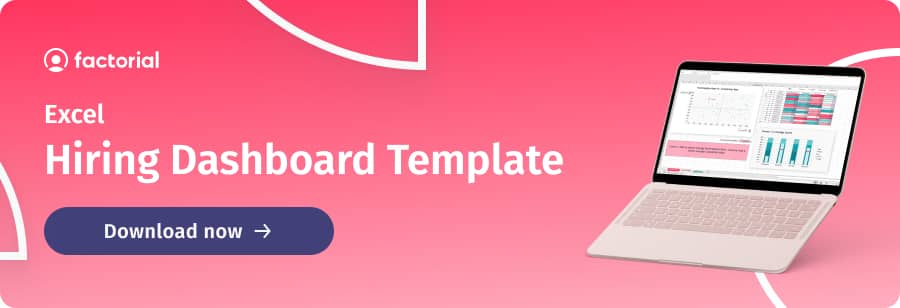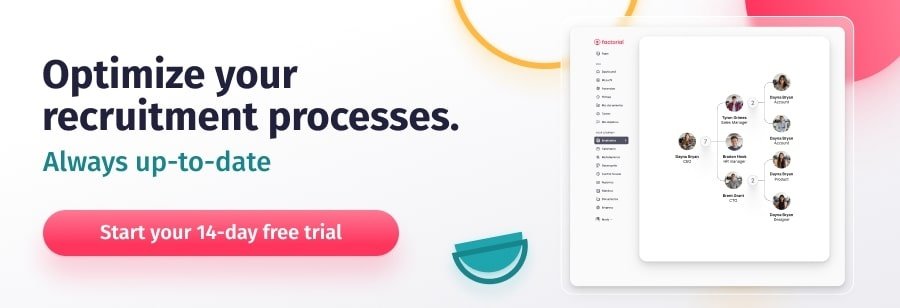As an HR professional or small business manager, one of your most important functions is sourcing and hiring the right talent for your business. You not only need to find people with the right skills and experience to match each position in your organization; you also need to make sure the candidates you hire fit into your corporate culture. To achieve this, you need to make sure each stage of your recruitment funnel is working as effectively as possible.
Aside from hiring top talent, a good hiring funnel also helps you offer a quality candidate experience, which has a direct impact on your employer brand and reputation. In fact, according to a CareerArc survey, nearly 60% of surveyed candidates said they had a poor candidate experience, and 72% of those candidates shared that experience online.
This means it is vital to get it right.
So, what exactly is a recruiting funnel and why do you need one? What stages should you include in your funnel and what funnel metrics should you be tracking?
What Is a Recruitment Funnel?
A recruitment funnel, also known as a hiring funnel or a recruiting funnel, is a framework that defines each stage of your recruitment and selection process. This includes sourcing candidates from your talent pool, filtering and screening, conducting interviews, making hiring decisions, extending offers, and onboarding. The aim is to capture as many potential leads at the wide mouth of the tunnel and narrow the pool until you are left with a top-quality candidate at the top of your funnel.
A recruitment funnel is a valuable HR tool that helps you keep track of each internal and external recruitment process. You can use this method for all your hiring needs, including recruiting manager roles, hiring new employees, and rehiring boomerang employees.
By regularly analyzing your funnel with a series of metrics, you can determine where you are spending most of your time, and where you need to invest more energy. And this can provide you with a great deal of insight into how you can make your hiring process more efficient and better address potential understaffing or overstaffing needs.
Why Have a Recruiting Funnel?
So why is it so important to design and implement a candidate recruitment funnel?
Put simply, the overall goal is to create an effective, scalable, and systematic process for attracting, nurturing, and hiring talent. This helps you build a strong workforce that can help your company grow and develop on the road to success.
Specifically, a recruitment funnel can:
- Break down your recruitment process into defined stages, each with its own strategies, goals, and actions. These actions can then be assigned to different members of your recruitment department.
- Optimize each stage of your hiring process in order to improve the overall experience. This helps candidates engage with your brand and helps you build a strong and positive employer brand.
- Provide valuable insights into the time and money you are investing at each stage of your hiring process so that you get maximum ROI.
- Highlight which channels, platforms or strategies aren’t working at any stage of your hiring process so that you can make necessary improvements.
- Help you identify which diversity and inclusion recruitment best practices you need to work on in order to build your brand and reputation as a fair and inclusive employer (such as the use of blind CVs, for example)
- Improve communication and ensure that everyone involved in the hiring process knows the exact workflow for each new hire. This helps keep everyone on the same page, speeding up your hiring process and helping you get top candidates to the onboarding stage as quickly as possible.
What Are the Stages of the Recruitment Funnel?
The exact structure of a recruitment funnel is likely to vary from one company to another. This is because each business has its own processes and methods for hiring new employees. A lot of this will depend on the size and structure of your business, as well as your industry and specific small business hiring needs.
Generally speaking, a typical recruiting funnel template will include the following processes:
- Raising employer branding and awareness
- Attracting potential candidates
- Receiving, reviewing and filtering applications
- Conducting pre-screening and screening processes
- Interviewing
- Reviewing assessments and making hiring decisions
- Making formal offers
- Onboarding new employees
However, it’s important to adapt your selection funnel to the requirements of your hiring process checklist.
Let’s take a look at some of the most important stages from this list.
Employer Branding Awareness
The bottom of the recruitment funnel should always begin with raising awareness of your employer brand. This is because the more the general public knows about you, the more likely you are to attract top talent.
Posting vacancies on job boards is not enough these days. You need to use as many strategies as possible in order to communicate why potential candidates should choose you as an employer. This means highlighting the perks and benefits you offer on your company page, raising awareness of your mission, vision and values on social media, and engaging with potential candidates in a way that ensures you build a strong and positive employer brand.
Sourcing Candidates
The next stage of your hiring funnel should be all about sourcing and screening the right candidates. This will help you remove any unsuitable candidates from your talent pool so that you can focus on those who could potentially be of value to your organization.
The first step here is creating a compelling job description. The perfect job ad needs to be informative, inclusive, interesting, and exciting. That way you can be sure to attract qualified applicants.
You then need to decide where you are going to post your ads. It’s best to use as many platforms, channels and portals as possible here so that you can reach a larger audience. You could even get creative and consider implementing a few virtual recruiting ideas to help you throw the net even further out.
Screening Candidates
Once you’ve collected applications, it’s time to screen them. The aim here is to rule out any candidates who might not be suitable for the job. This will help you identify a smaller shortlist of qualified applicants that you can then go on to interview.
This stage usually includes reviewing resumes, phone or video screening, reviewing social media profiles, or even conducting pre-screening tests to evaluate cognitive abilities and soft skills.
Interviews
After screening your candidates and creating a shortlist, the next stage of your funnel is conducting interviews. The number of interviews you conduct with each candidate will depend on a number of factors. This includes the role you are looking to fill, job requirements, and the structure of your organization. For example, you will need to be much more thorough if you are hiring an executive compared to a lower-level administrator.
Hiring Decision
The top of your recruiting funnel is where you make your hiring decision, extend a formal offer letter to your selected candidate, and negotiate employment contract terms (salary, benefits, PTO, etc.). This decision should be based on input from all members of your hiring team that have been involved in each stage of the recruitment funnel.
It can be helpful to use a hiring dashboard at this stage of the funnel. This will help you visualize the hiring process from start to finish. If you don’t already have one, check out Factorial’s hiring dashboard template to inspire you.
Once a candidate has accepted your formal offer, they will be at the top of your recruitment funnel. This means they are ready to negotiate and sign contracts and begin the onboarding phase.
How to Create a Recruitment Funnel
We’ve seen what the stages of a recruitment funnel are. Now let’s look at a few recruitment tips to help you create an effective funnel for your business:
- Focus on employer branding
- Build a strong social media presence
- Write a compelling job description
- Implement measures to eliminate hiring bias
- Prioritize improving the candidate experience
- Keep candidates informed at all times
- Use metrics to identify what works, and what doesn’t. This will help you test and adjust your recruiting funnel so that your hiring process works as efficiently as possible.
What is Funnel Analysis in Recruitment?
Funnel analysis in recruitment is about using metrics to analyze your hiring processes. This helps you ensure that each stage works as efficiently and effectively as possible. The right metrics can help you determine what’s working well, and what adjustments you need to make in order to attract and retain the best candidates for the job. This helps to boost your recruitment ROI and improve your general employer brand.
4 Recruitment Funnel Metrics
So, which recruiting funnel metrics will help you identify what’s working well and where you need to make changes?
Here are a few valuable funnel metrics you should be tracking.
Time to Hire & Conversions
This is the time taken to hire a candidate. If you are taking a long time to fill positions, then it suggests that something isn’t working well in your recruitment funnel.
The same goes for conversion rate recruitment metrics. If you are receiving a large volume of applications but your hiring conversion rate is low, then there could be an issue with your job postings.
Cost Per Hire
This is the total cost of each new hire. This metric is also a valuable indicator that can suggest there are potential issues in your funnel. By measuring cost per hire, you get a benchmark for driving recruitment costs down.
Source of Hire
This metric helps you determine which platform or job site is providing you with the highest number of quality candidates. Are you sourcing more candidates from job boards, social media, referral programs, or external recruitment agencies?
This data then helps you make informed decisions about where to allocate your spending and efforts.
Quality of Hire
Finally, and most importantly, this recruitment funnel metric helps you assess the quality of candidates that reach the final stage of your hiring process. This is important because the aim is to hire quality talent that generates value and is likely to stay with your business in the long term.
Consider factors such as productivity, long-term retention, and performance when you measure this metric. All this gives you a clear indication of how efficiently your recruitment funnel is working so that you select the best candidate for the job with each new hire.



